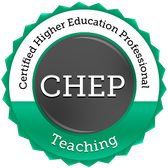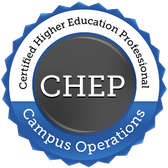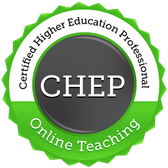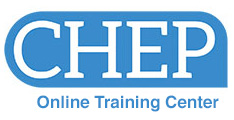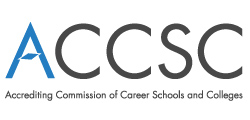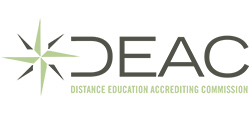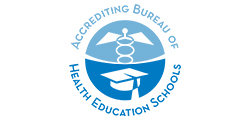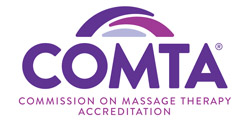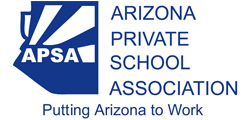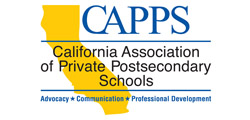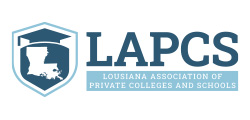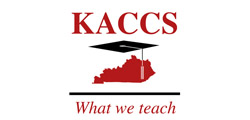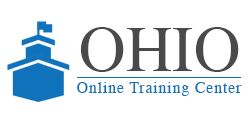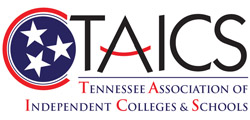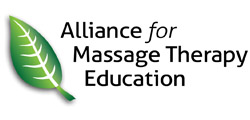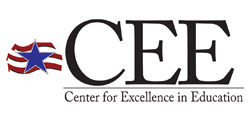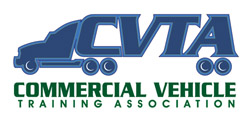Badge Evidence | Completed Courses (4 Hours Each)
ACCSC102Fulfilling the Standards of Accreditation: Academics
This course focuses on the ACCSC Standards of Accreditation which directly tie to the academic areas and program requirements for an accredited school. The course includes information on program development and design, educational policies and procedures, faculty, student services, and educational delivery methods.
CM105-PCIBeyond Compliance: Doing the Right Thing
This course is designed to give you a clear and practical understanding of the federal and state regulatory standards that govern the conduct of your organization and correspondingly underlay the performance of your job. The purpose of the course is not to train you to be a regulatory expert, but to provide the information you need to do or say the right thing when interacting with prospective students and students, as well as the consequences of doing or saying the wrong thing whether by mistake or with intent.
This is a private course intended for associates employed by this Institute.
CM106RCreating a Compliant Culture: Do’s and Don’ts
This course is designed for campus management and employees at all levels seeking a better understanding of creating a compliant culture in today’s regulatory environment. It summarizes the importance of creating a culture that aligns with regulatory oversight as the cornerstone of an organization. A synopsis is provided on the interwoven relationship of the Triad with emphasis on the Program Integrity rules. This course also explores the "Do’s and Don’ts" for communicating with students throughout their education whether it is during enrollment, financial aid, education or career services. Additionally, specific sections provide management with a more comprehensive review of Program Integrity rules and how they impact faculty and staff interactions with students.
CM140Title IX and VAWA Training: Building Safer Campuses
This course is designed to assist personnel at all levels of an educational institution in the understanding of the provisions of Title IX of the Education Amendments of 1972 ("Title IX") as amended on August 1, 2024, and the Clery Act as amended in the Violence Against Women Reauthorization Act of 2013 ("VAWA"). These laws require that all individuals in an educational institution understand and comply with the laws in terms of what is prohibited behavior in relation to sex-based harassment and/or sexual violence, and what steps are to be followed when such prohibited conduct occurs. This course gives the participants information about the laws, as well as procedures to follow, to provide for the rights of all individuals under the laws. It also provides additional resources to assist educational institutions in continuing to build and strengthen their Title IX and VAWA policies, procedures and training throughout the year.
CM141FERPA and Privacy: A Practical Approach
The Family Educational Rights and Privacy Act of 1974 (FERPA or the Buckley Amendment) is a federal law in the United States designed to provide students with access to, and the privacy of, their educational records. The law applies to students in higher education and educational institutions that receive funding under a program administered by the U.S. Department of Education. This course is designed to provide participants with a working knowledge of FERPA guidelines to ensure proper handling of educational records and other institutional requirements.
CM142Understanding Title IX, VAWA, and the Clery Act
This course will review Title IX, the Jeanne Clery Disclosure of Campus Security Policy and Campus Crime Statistics Act, and the Violence Against Women Act. In addition to the background of each topic, victim rights, support system implementation, and grievance policies will also be explored.
The goal of this course is to help develop a better understanding of the topic and produce tangible resources to help implement plans, strategies, and ideas at your school.
In addition to lecture videos, links to resources, and assessments, you will be able to utilize the Journal and Learning Activities. Take advantage of a method that works best for you.
CM143Building and Leading Effective CTE Advisory Boards
This course provides CTE program leaders with practical strategies for transforming advisory boards from compliance exercises into powerful tools for driving program success. It guides participants through the complete advisory board life cycle, from establishing foundations to measuring impact.
The content addresses the basics of board design and setup, goal-setting, recruiting, meeting management, and more. Participants learn to identify key stakeholders, establish clear expectations, engage members effectively, and implement strategic initiatives that enhance program quality.
Throughout the course, emphasis is placed on creating boards with meaningful industry connections that drive program success. By focusing on purposeful engagement rather than administrative requirements, the course helps CTE leaders develop boards that effectively bridge education and industry needs, ultimately improving student outcomes and program relevance.
CM251Students with Disabilities: Legal Obligations and Opportunities
This course provides faculty, staff, and administrators with an understanding of the legal mandates regarding equal access for students with disability. More importantly, it provides a practical framework to help institutional personnel know what to say and do in the context of their defined role and interactions with students with disabilities. Topics include the civil rights nature of applicable Federal law, definitional issues, the impact of disability on traditional education activities and pursuits, reasonable accommodations, and the unique responsibilities of faculty, staff, and administrators as prescribed by their position.
EC115Integrating Career Readiness Into Your Courses: Part I
This course will provide an overview of career readiness including information and activities that may be incorporated into your courses. This course, which forms Part I of a two-part series, provides details about four specific career readiness skills: critical thinking/problem solving, verbal/written communications, teamwork/collaboration, and information technology applications. Additional thoughts and resources will also be provided to allow you to consider multiple ways to assist students in developing these skills in your courses.
ED101Effective Teaching Strategies
This introductory course covers the essential roles of a teacher and the competencies required to be a successful instructor in an educational institution. Proven techniques and strategies for planning and preparation are presented and discussed. In addition, the course offers effective methods for conducting the first class meeting and delivering course content. This course provides a solid foundation for new instructors and serves as an excellent refresher for more experienced instructors.
ED102Student Retention Methods
The instructor is the real key to student retention at any educational institution. Instructors must keep focused on student motivation and retention each and every day of class. Developing strategies for retaining students throughout the entire training sequence is both complex and rewarding. All instructors should have the goal of seeing all of their students successfully complete their class. This course helps you reach that goal by helping you to understand your students and use proven motivation and retention techniques to keep them enrolled and engaged in the learning process.
ED103Student Learning and Assessment
Educators work with students who want to learn specific skills that will lead to fulfilling careers. As educational instructors it is our job to help each student to achieve this goal. Just as you may have a particular style of teaching that you prefer, your students have preferred ways of learning. This course will help you to identify the different learning styles of your students so that you can adjust your instruction to better accommodate them. Good teachers also regularly monitor the effectiveness of their instruction by assessing their students’ learning. This course will examine several aspects of assessment including how to create good tests, how to ask effective questions and how to get your students to actively participate in their learning by asking questions themselves.
ED104Class Management Strategies
This course provides methods and techniques for managing students and class activities. We start by reviewing the steps instructors need to follow as they introduce a class to new students. We then discuss strategies to effectively deal with unfocused and challenging students. The course ends by describing common mistakes made by instructors and ways to avoid them.
ED105Instructional Planning for Student Success
This course shows instructors how to develop a comprehensive approach to effective and efficient instruction. From preparation for the classroom to selection of instructional delivery methods, the course provides effective ways of planning instruction to help instructors keep the content focused and the students engaged. We also cover the steps to set up a complete evaluation system that will work in all settings.
ED112Influencing Student Motivation
This course is intended to offer a practical explanation of how an instructor’s behaviors and choices can influence the motivation of students. It is not intended to be a theoretical or academic treatise about motivation. Module 1 offers useful tips that may help instructors to motivate students. Students’ security and autonomy are described as they influence motivation during instruction, questioning, activities, and evaluations. This is followed by a discussion of how motivation can be improved by enhancing students' sense of autonomy when making assignments, selecting instructional methods, implementing classroom procedures, and developing evaluations. In Module 2, intrinsic and extrinsic motivators are defined and compared. Finally, a variety of "miscellaneous motivators" are offered for instructors to consider.
ED142Military Veterans: Integrating Veterans into Post-Secondary Classes
This course examines the various challenges veterans face when attempting to pursue courses of study following military engagements and service. While no instructor can possibly identify with every aspect of a veteran's experience, it is possible to become more aware of some of the challenges facing veterans as they reintegrate into civilian life. This course also examines effective instructional strategies in design and delivery to facilitate the success of veterans in a post-secondary environment.
ED148ChatGPT and Educational Uses
This course will provide an overview of ChatGPT and how it might impact education. With an artificial intelligence (AI) language processing tool, there could be endless possibilities. However, like any other technology, its use in education is to be considered carefully, because learning will be affected. The course begins with an overview of the history of chatbots and artificial intelligence and goes on to discuss how to use ChatGPT, how teachers and students may use it, and the advantages and disadvantages of its use.
ED206Teaching in the Lab and Shop Environment
The classroom in an educational institution is often more than just chairs, books, and a white board. Frequently the learning takes place in a lab or shop environment, where the traditional rules of classroom management and teaching may not always apply. This course covers the instructional techniques necessary for the non-traditional classroom, including strategies for teaching to each student's individual learning style. In addition, this course describes strategies for assessing student progress. Safety guidelines and considerations for specific lab and shop environments are identified.
EL101Designing and Developing Online Courses
This introductory course will provide you with the knowledge and skills to create successful online courses, whether for faculty-supported distance education delivery or as a supplement to classroom instruction. You will learn to design and develop online courses that have structural integrity and navigational simplicity with a focus on student-centered learning and intellectual interaction. The course covers various learning activities that are supported in an e-learning environment and describes the typical components of an online course. We will provide you with the media strategies and course design methodologies that will allow you to develop online courses in an effective and efficient manner.
EL102Online Teaching Techniques
Your degree of success as an online instructor relies heavily on several factors, among which are your level of preparedness before the date on which the course is launched; your ability to make a smooth transition into the roles and responsibilities associated with teaching in an online environment; and the effectiveness and efficiency with which you manage learners, instructional transactions embedded in the course as well as the learning environment. In this course, you will learn how to project your authority and presence into the e-learning environment, build a relationship with each learner, promote and nurture learner participation, provide informative and constructive feedback in a timely manner, minimize attrition, manage communications, manage unacceptable behavior and resolve disagreements.
EL103RTeaching Online: A Student-Centered Approach
This course will provide you with the knowledge and skills to successfully author, teach, assess, and revise online courses. You will learn to develop a course framework with consistent modules. Building an online community and constructing a dynamic syllabus are important in helping you communicate with students. You will also learn how to develop an assessment plan that includes peer and self-assessment. No online course is complete without a comprehensive revision cycle. This course will walk you through the process of "closing the loop" to create a complete revision and improvement plan for your online course. We will provide you with ideas for student-centered learning that includes activities and intellectual interactions using a variety of technological tools.
EL104Teaching and Organizing a Virtual Learning Environment
This course will provide you with basic information to teach in a virtual learning environment and understand the importance of organizing course content. You will learn about the important role technology tools play in teaching and organizing an online course. You will also learn the difference between synchronous and asynchronous learning. As the components of each are discussed, you will further identify appropriate methods, develop guidelines, organize content, and establish a pattern of teaching for each method.
EL105ROnline Language: Communicating with Students
This course provides information to help you effectively communicate with students and encourage communication among students in an online environment. You will learn the importance of facilitating instructor-to-student (I2S), student-to-instructor (S2I), and student-to-student (S2S) communication. Digital technology tools play a vital role in the modern communication process, and several are discussed in this course. In addition, discussion is provided to help you further understand how to manage and measure communication in an online course and help students communicate effectively.
EL106Evaluating Student Learning in Online Courses
This course will provide you with the knowledge to effectively evaluate student learning in an online environment. Technology tools play a vital role in the evaluation process and several are discussed in this module. Discussion will also be provided to help you further understand how to complete formative and summative assessments, as well as the advantages and disadvantages of objective and subjective assessments. Value-added assessments are also discussed in light of how they can be completed and provide feedback for course revision.
FA110Developing an Efficient Financial Aid Office
This course provides a blueprint for running an effective financial aid office in an educational institution. You will learn to optimize the performance of your financial aid office with a minimum of waste, expense, and unnecessary effort. The course covers the cornerstones of an efficient financial aid office: timeliness, accuracy and customer service. You will also be advised of pitfalls to avoid in the realm of Title IV compliance. You will learn the key points to building an effective business office processing procedure. Reports and notifications required by the Department of Education are also explained. In addition, you will be given pointers on preparation for the annual Student Financial Aid (SFA) compliance audit and alerted to the most common triggers for Department of Education Program Reviews.
FA120Default Prevention: A State of Mind
This course offers proven-successful techniques that ultimately prevent student loan delinquencies and defaults. Because there is not one miracle that reduces the chance of student loan defaults, this compilation of ideas and practices collectively greatly reduces those risks by giving ownership of the loan responsibilities to the students who benefit from them. By integrating effective borrower education and interaction from the day your students walk through your front door, your students will embrace the state of mind needed to give them lifetime accountability for their Federal Student Loans obligations.
FA230Financial Aid Management - Compliance without Compromise
With a seemingly endless stream of new laws and regulations, institutions have become burdened with ensuring they are compliant, while continuing to give great customer service to their students and families and all while achieving larger institutional goals. The role of the Financial Aid Office in compliance cannot be underestimated, but the Director of Financial Aid cannot ensure compliance in a vacuum.
This course is designed to examine the fundamentals of law and regulation, and of the enforcement process. More importantly, this course provides tools for School Directors, Chief Financial Officers, Enrollment Managers, and Financial Aid staff to develop and build compliant practices that don't interfere with effective operations, customer service or institutional goals.
FA231Regulatory Compliance - Outside the Financial Aid Office
This course will help participants to interpret the many rules and regulations that are required by educational institutions offering Title IV funding. It will aid in preparing management and faculty in recognizing that compliance is the responsibility of the entire institution and is not just the job of the Financial Aid Office. Course content will also aid the individual in building a "culture of compliance" which will encourage teamwork and secure the cooperation of others on campus.
ML141Finance Essentials
Financial management can be a daunting task. This course covers the essential concepts of finance, budgeting, forecasting, and planning for non-financial managers.
OP115RHiring the Right Faculty for Your Institution
This course shows you how to hire high-quality instructors and orient them to your institution. The skills also apply to hiring staff. It's easy to hire someone to do a job. But it can be difficult to hire the right person. You want instructors who are top notch. They represent your institution and interact with the most people at your campus and particularly your students. This course starts with how to determine exactly what type of people you need as your instructors. Then it shows you how to recruit and hire them. Once hired, you'll learn how to introduce them to the working environment at your institution. By the time you finish this course, you'll be recruiting, hiring, and orienting quality instructors. You'll see results in improved enrollments, student achievement, retention, and completion.
OP121Managing Online Faculty at a Distance
It is no longer news that predictive learning analytics are changing online classroom instruction. This course teaches current trends in locating, hiring, monitoring and retaining the best professionals that specialize in online instruction. More importantly, this course provides insights for using the new predictive analytic approaches to optimize management of online faculty. Generalized "best practices" are waning in favor of real-time monitoring for individualized qualitative and quantitative analyses. This real-time approach provides significantly increased student success and retention. Also addressed in the course is how to build a strong faculty management team, continuing faculty development recommendations and various business considerations.
